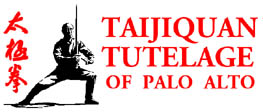
| Press the "Back" button on your web browser to return to the previous page. |

|
After our translation of the selection of the late Master Tung Ying-chieh "On Lightness and Firmness in Legs" (T’AI CHI, January-February, 1978), several inquiries were received about the correctness of his following statement:
"The firmness of the two legs changes continuously. When a leg is light the strength applied there varies between 50 per cent and 20-30 per cent. When it is firm, it may be 80-90 percent. If you do not apply any strength on a foot, the foot will not follow your mind. If you apply too much strength, it is stagnant." (Underlines added)
Their questions are mainly grounded in this reasoning: If a leg which is "light" is 50 per cent, the other leg must also be 50 per cent. This stance does not distinguish between lightness and firmness at the two legs and falls into the pitfall of double heaviness as described in Wang Chung-yueh’s "Treatise." Since this view must be shared by many readers, a clarification is necessary.
These critics think in terms of the percentage distribution of the body weight from gravity to the two legs. The direction of this gravitational force must be perpendicular to the ground. Whether the body weight is borne by one leg or both legs, the total must be 100 per cent. Hence, if one leg takes 50 per cent, the other leg must automatically take 50 per cent.
But what Tung talked about is the amount of dynamic strength applied at any one leg toward any direction. If the potential strength at each leg is 100 units, a leg applying no more than 50 per cent of its own potential strength may still be called light in comparison. At the same time, the other leg may apply either 70, 80 or 90 per cent of its own potential strength and can be considered firm in comparison.
In Taichichuan, where full strength is never applied, the strength at any leg may be less than 100 per cent of its potential strength. However, the total strength at the two legs combined can be larger than 100 per cent of the potential strength of any one leg, although it must be less than 100 per cent of the potential strength of both legs combined.
Tung’s point amplifies the classical views of Li I-yu (1833-1892) and Yang Cheng-fu (1883-1936), and applies them to the legs. Li said, "Firmness (chih) does not mean to stand rigidly; there is lightness (shu) in it. Lightness is not completely void of strength (li); there is firmness in it."
Yang said, "Lightness is not void (k’ung), the strength is not discontinued, but still retained for stretching, contracting, and changes. Firmness should not involve excessive strength (jing)." (Underlines added)
From the above statements, it is evident that lightness and firmness in Taichichuan relate to the nature and amount of strength applied, and not to the percentage of gravitational body weight supported by any part of the body. This interpretation is consistent with the classic expression that, "Each location has its lightness (shu) and firmness (shih); everywhere is this lightness and firmness."
If one stands on one leg, it bears 100 per cent of the body weight. But this does not mean that the other leg is void of strength. Some strength is applied against the gravitational force to hang it up or move it around. More strength is required if the foot is kicked out.
When Yin and Yang are applied to other parts of the body, sometimes the general terms "lightness" and "firmness" may still be used. But, in most occasions, the specific terms are clearer.
These include contracting and extending, storing and issuing, withdrawing and releasing, redirecting and attacking, etc. (See authors’ article on "Yin and Yang in Taichichuan," Self-Defense World, March, 1976.)
When one’s right hand changes from redirecting to attacking, for example, it changes from lightness (shu) to firmness (shih). It does not follow, however, that his left and must simultaneously change from firmness to lightness.
But no part of the body should become full Yin or full Yang at any time, in order that they may change between Yin and Yang in free alternation.
In our example, one is not void of all strength when he redirects (melts or dissolves) his opponent’s strength (Yin) and does not use full strength when he attacks (Yang), so that he can change from redirecting to attacking and vice versa in continuous circles.
This is how the Taichi principle is applied to the martial art and exercise. Once when full strength is applied, the change will be abrupt and not continuous, like any other martial art.
This alternative, uninterrupted change between Yin and Yang is the basic concept of Taichi, which is dynamic, and distinguishes Taichichuan from other martial arts and calisthenics. It is the essence of Wang Chung-yueh’s "Treatise" that, "To avoid this pitfall (double-heaviness), one must know Yin and Yang.
To adhere is also to redirect; to redirect is also to adhere.
Yin does not separate from Yang; Yang does
not separate from Yin. Yin and Yang complementing
each other leads to understanding of strength."